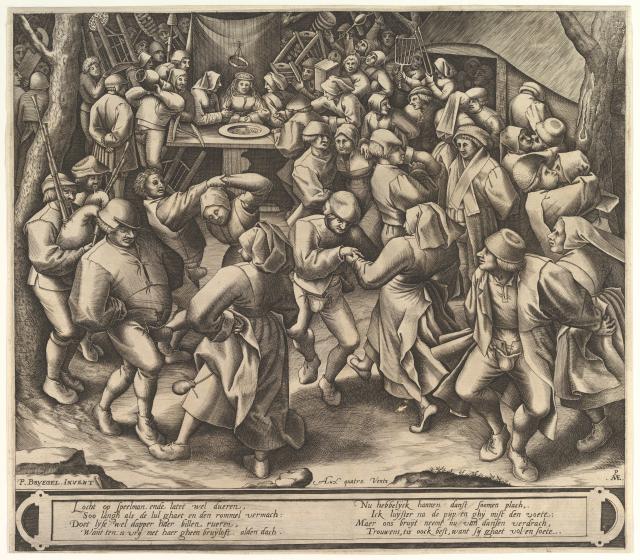Boerenbruegel is the epitheton ornans that usually accompanied the artist. For many, he is the painter par excellence of the festival-celebrating peasant folk. Nonetheless, there are actually very few examples seen of this. The image of Bruegel as the painter of peasants and carnival scenes is primarily determined by only three paintings from the period of 1566 - 1567: The Wedding Dance (The Detroit Institute of Arts) The Wedding Banquet and The Village Kermis (latter two: Kunsthistorisches Museum, Vienna). That image was strengthened even more by copies, variations and pastiches from the studio of his eldest son Pieter Brueghel the Younger (1564 - 1638).
What Bruegel's attitude towards the celebrating peasants is is not entirely clear. According to Van Mander, the urbanite Bruegel was uneasy in the ambiance of such festivities. A mix of sympathy and ironic humour speaks from his imagery. He was both a participant as well as an observer. Bruegel is the outsider that smiles at so much picturesque folklore. His peasants' scenes breathe a good-natured idyll, in which monumental figures are acting: babbling, dancing, consuming, kissing and making music.

